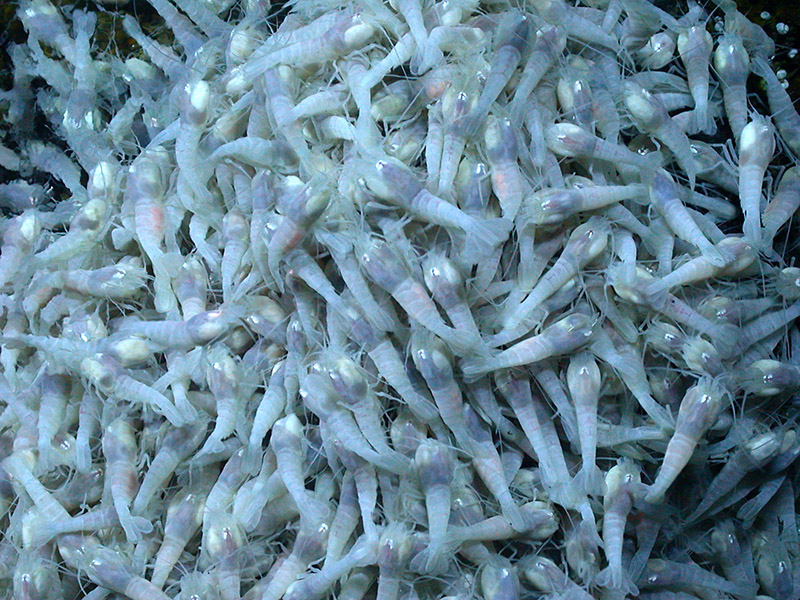Shrimp called Rimicaris hybisae at deep hydrothermal vents in the Caribbean seem to have different dietary habits depending on the proximity of other shrimp. Those who live in dense clusters like this one live off bacteria primarily, but in areas where the shrimp are distributed more sparsely, the shrimp are more likely to turn carnivorous, and even eat each other. (Courtesy Chris German, WHOI/NSF, NASA/ROV Jason ©2012 Woods Hole Oceanographic Institution)
Home Shrimp called Rimicaris hybisae at deep hydrothermal vents in the Caribbean seem to have different dietary habits depending on the proximity of other shrimp. Those who live in dense clusters like this one live off bacteria primarily, but in areas where the shrimp are distributed more sparsely, the shrimp are more likely to turn carnivorous, and even eat each other. (Courtesy Chris German, WHOI/NSF, NASA/ROV Jason ©2012 Woods Hole Oceanographic Institution) Shrimp called Rimicaris hybisae at deep hydrothermal vents in the Caribbean seem to have different dietary habits depending on the proximity of other shrimp. Those who live in dense clusters like this one live off bacteria primarily, but in areas where the shrimp are distributed more sparsely, the shrimp are more likely to turn carnivorous, and even eat each other. (Courtesy Chris German, WHOI/NSF, NASA/ROV Jason ©2012 Woods Hole Oceanographic Institution)
Shrimp called Rimicaris hybisae at deep hydrothermal vents in the Caribbean seem to have different dietary habits depending on the proximity of other shrimp. Those who live in dense clusters like this one live off bacteria primarily, but in areas where the shrimp are distributed more sparsely, the shrimp are more likely to turn carnivorous, and even eat each other. (Courtesy Chris German, WHOI/NSF, NASA/ROV Jason ©2012 Woods Hole Oceanographic Institution)



